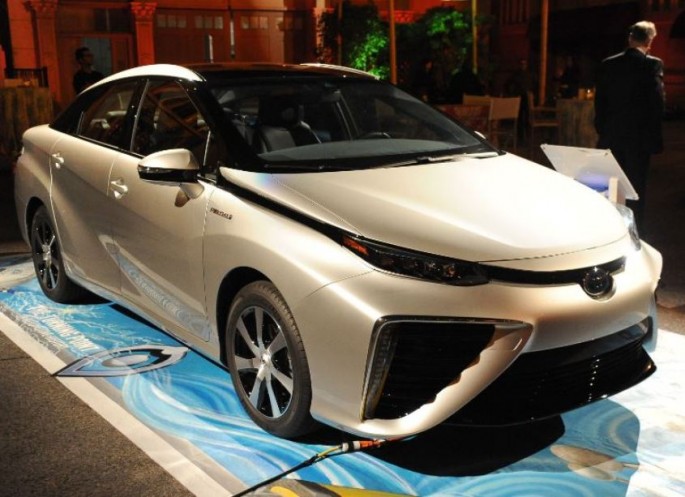Toyota places a huge bet on the Mirai, the company's first fuel cell vehicle, to become the real future of a cleaner transportation. The company aims to make the Mirai, its first fuel cell vehicle, to become the real future as far as achieving a cleaner transportation is concerned.
Recently, Toyota qualified for a rebate of $5,000 from the state of California along with the much desired white carpool-lane sticker. It is slowly introducing the Mirai in the state with the establishment of only eight dealership locations, four in the northern part of California while the other four in the southern portion.
Potential customers are required to reside near any of the dealerships and would have to make sure that there is a hydrogen fueling station nearby. They can also choose from the vehicle's four color options that include white, black, blue and silver.
In an interview with Bloomberg, Toyota spokesman John Hanson said, "We're just now starting to deliver the first Mirais in California. But we believe that hydrogen fuel cell electric vehicles, more than battery electric vehicles, will become mainstream vehicles more quickly."
Fuel cells are like batteries that will never run flat. Normal batteries tend to slowly become depleted of the chemicals inside them but fuel cells do not. They run on a steady supply of hydrogen and continue to make electricity so long as there is fuel in the tank.
Toyota believes that hydrogen-powered cars are a whole lot better than those that are battery-electric powered. Moreover, the company argues that the technology is a better long-term solution to meet regulations that promote cleaner air.
In the meantime, California has a zero-emission vehicle goal which it plans to achieve by 2025. Part of the plan includes seeing as many as 1.5 million of these vehicles - electric, hydrogen and plug-in - to hit most of its roads a decade later.
As a way to speed up consumer adoption, the state is investing as much as $200 million in the needed infrastructure that would provide consumers with 100 hydrogen refueling stations. Most of these structures are planned to be concentrated in Los Angeles and in the Bay Area.
The new Mirai has an innovation that is "even greater than that of the first-generation Prius," Ars Technica quoted Mirai chief engineer Yoshikazu Tanaka as saying. The first-generation Prius was picked as 2015's Best Green Car, a recognition that it has earned for 12 years in a row.
It remains to be seen whether or not the new Mirai indeed has the technology to achieve a cleaner and greener transportation. Toyota hopes that it can produce 30,000 units every year by 2020. Its immediate goal is to produce 2,000 units in 2016 and then make it into 3,000 units in 2017.



























